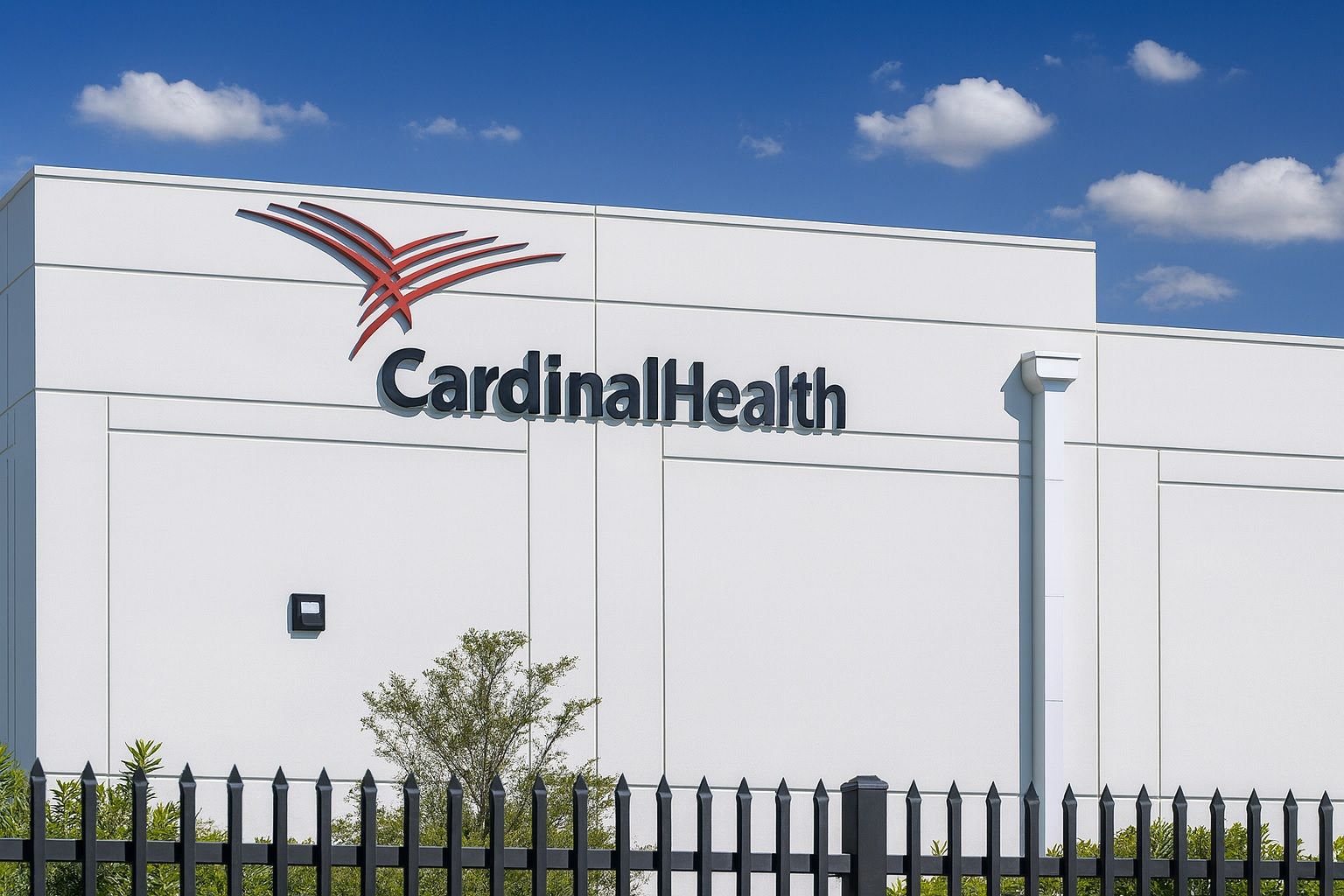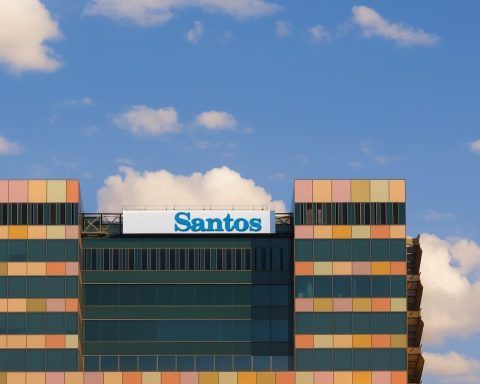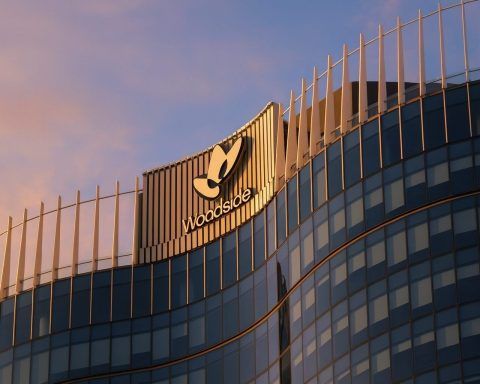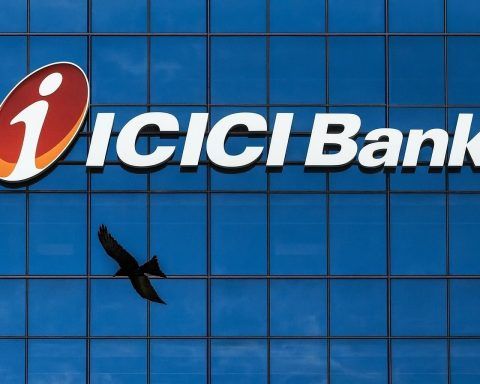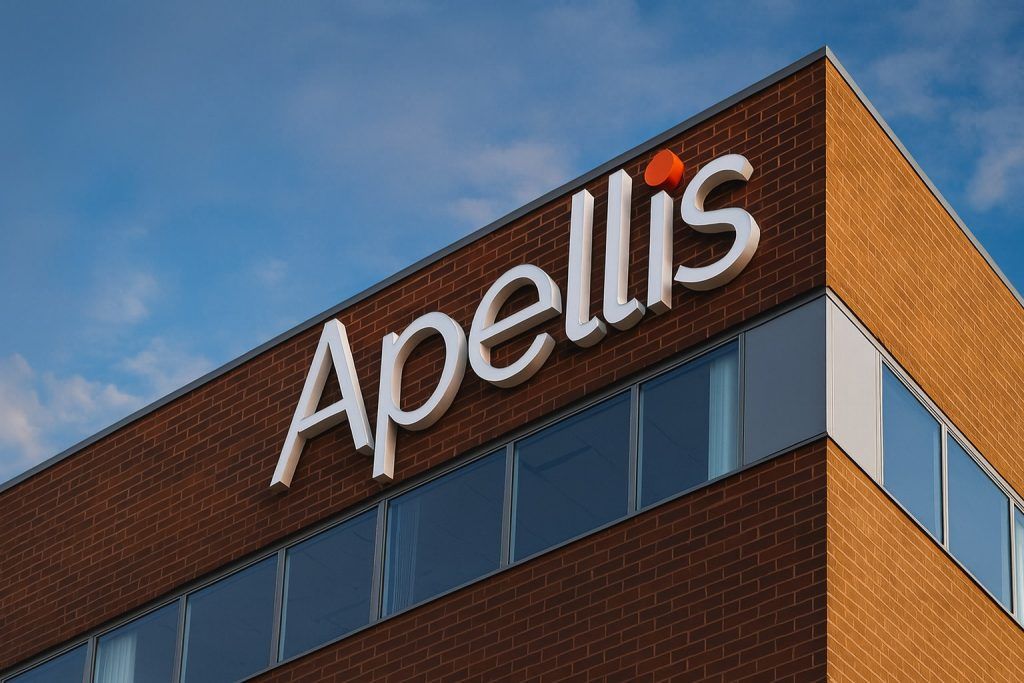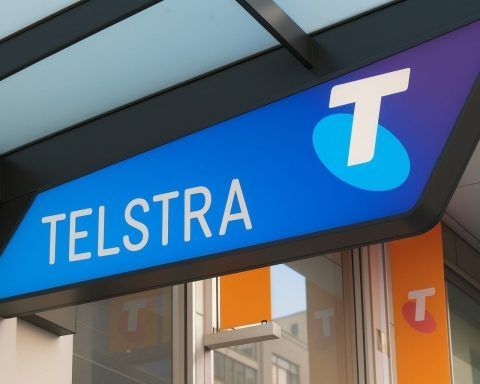- Shares Skyrocket: Cardinal Health stock jumped about 13% to record highs in the mid-$180s after a strong earnings report, extending a ~50% one-year rally [1] [2].
- Earnings Beat Estimates:Fiscal Q1 2026 adjusted EPS was $2.55 (vs. ~$2.20 expected) and revenue hit $64.0 billion (vs. ~$59.8 billion expected), a 22% YoY sales jump [3]. All five operating segments saw profit growth, fueling an 8th straight earnings beat [4] [5].
- Guidance Raised: The company boosted its full-year forecast, raising FY2026 adjusted EPS guidance to $9.65–$9.85 (up from $9.30–$9.50) and free cash flow outlook to $3.0–$3.5 billion, citing broad-based strength and an upcoming acquisition [6] [7].
- Strategic Moves: Cardinal Health launched a $375 million share buyback program and plans to close the Solaris Health acquisition by early November to expand its specialty pharma services [8] [9]. It also issued $1 billion in notes to fund deals and is building a 230,000 sq. ft. automated distribution center in Indianapolis to modernize its network [10].
- Analyst Upgrades: Wall Street is bullish – Argus raised its price target to $189 citing strong execution and undervaluation relative to peers [11], and Baird recently hiked its target to $203, suggesting further upside for CAH stock [12].
Stock Hits All-Time High After Earnings Surprise
Cardinal Health’s stock price surged to an all-time high on October 30, 2025, after the company delivered much better-than-expected quarterly results. Shares soared ~13% in one day, briefly trading above $190 intraday and settling around $185 – levels never seen before [13] [14]. This spike extended Cardinal’s impressive rally (the stock is up over 50% year-on-year), as investors reacted enthusiastically to the latest earnings and outlook. The one-day jump came amid heavy trading volume and put Cardinal Health among the top gainers on the NYSE that day [15]. The broad market was mixed, making Cardinal’s leap even more noteworthy.
What drove the surge? In short, Cardinal Health crushed expectations in its fiscal first quarter 2026 report and raised its future guidance, signaling momentum ahead. The company’s performance and upbeat forecasts appear to have galvanized investor confidence, propelling the stock to new heights. “This outstanding first quarter reflects our focused execution across each of our operating segments and provides a solid foundation as we carry forward. As a result, we are raising our fiscal 2026 outlook,” said CEO Jason Hollar in the earnings release [16]. His comments underscored management’s confidence after a strong start to the year.
Blowout Q1 Results Beat Estimates by Wide Margins
Cardinal Health’s Q1 FY2026 results handily topped Wall Street expectations on both the top and bottom lines. Adjusted earnings came in at $2.55 per share, which crushed consensus estimates (around $2.18–$2.21) by roughly 16% [17] [18]. This represented a 36% EPS jump year-over-year, thanks to robust operational performance. Revenues were equally impressive at $64.0 billion for the quarter, up 22% from the prior year and about $4 billion above analyst forecasts [19]. Notably, this beat was not driven by one-off accounting tricks or a single segment – it was broad-based across the business, a point highlighted by analysts. The Pharmaceutical & Specialty Solutions division (Cardinal’s largest, comprising ~92% of revenue) grew sales 23% YoY to $59.2 billion, “firing on all cylinders” with strong brand and specialty drug volumes [20]. Even the smaller segments contributed: the medical products unit grew modestly (+2% revenue) while the “Other” segment surged 38%, indicating diversified growth [21].
Crucially, profits expanded faster than sales, signaling improved efficiency. Non-GAAP operating earnings jumped 37% to $857 million, and GAAP operating income rose 18% [22] [23]. Margins improved as Cardinal isn’t “just moving more volume – it’s extracting better economics from each transaction,” one analyst noted [24]. Net income was $450 million for the quarter (GAAP), and operating cash flow was a healthy $973 million [25]. This marks the 8th consecutive quarter that Cardinal Health beat earnings expectations, averaging ~11% above consensus each time [26] – a streak that reflects consistent execution rather than luck.
The stellar quarter was fueled by strong demand in Cardinal’s core pharmaceutical distribution business. Management cited new customer wins and higher volumes in both brand-name and specialty drugs as key drivers [27] [28]. Even the generic drug program performed better than expected, contributing to growth [29]. The broad strength across segments gave Cardinal confidence to raise its guidance (more on that below). Overall, the earnings report showcased operational momentum and market share gains, explaining why investors bid the stock up so sharply on the news.
Raised Outlook and Shareholder Returns Signal Confidence
Alongside the earnings beat, Cardinal Health delivered upbeat forward guidance, indicating that momentum should continue. The company increased its full-year FY2026 earnings forecast, now expecting adjusted EPS of $9.65–$9.85 (up from a prior $9.30–$9.50 range) [30]. This revised outlook is above analyst consensus (~$9.43) and implies solid growth over the remaining quarters [31]. The midpoint ($9.75) suggests Cardinal will generate roughly $7.20 EPS over the next three quarters – an ambitious yet attainable target given Q1’s strength. Cardinal also lifted its FY26 free cash flow projection to $3.0–$3.5 billion (from $2.75–$3.25 B), indicating confidence in converting earnings into cash [32].
Management attributed the higher guidance to broad-based performance and expected benefits from upcoming initiatives. Notably, Cardinal anticipates closing the acquisition of Solaris Health in early November, which is factored into the new outlook [33]. Solaris is a specialty pharmaceutical services provider, and its integration should add scale in specialty drugs and be accretive to earnings. Cardinal now forecasts 16–19% profit growth this year in its Pharmaceutical segment (up from 11–13% prior), partly due to Solaris and continued volume strength [34]. Essentially, the company raised the bar for FY2026 because Q1 came in hot and management sees positive trends carrying forward.
In a further show of confidence, Cardinal Health’s board authorized a $375 million accelerated share repurchase (ASR) program during Q1 [35] [36]. This buyback will retire a chunk of shares, returning cash to shareholders and boosting EPS. Initiating an ASR signals that management views the stock as undervalued and is committed to sharing the upside with investors. Cardinal also pays a quarterly dividend of $0.5107 per share (about $2.04 annualized), which was most recently distributed on Oct. 15 [37]. The stock’s dividend yield is roughly 1.2%, a modest income stream that Cardinal has increased for 36 consecutive years (underscoring its status as a dividend-growth company). With earnings climbing, the dividend appears well-supported – and the new free cash flow outlook of up to $3.5 billion suggests ample room for continued buybacks, debt reduction, and dividend raises.
Recent Developments: Acquisitions, Expansion, and Debt Offering
Cardinal Health has also been active on strategic initiatives, which investors are watching closely. In late 2025 the company completed a $1 billion senior notes offering to bolster its war chest for acquisitions [38]. This debt issuance consisted of $600 million in 4.50% notes due 2030 and $400 million of 5.15% notes due 2035 [39]. The proceeds are earmarked largely for the Solaris Health acquisition, helping finance that deal on favorable terms. Along with the bond sale, Cardinal extended a key receivables credit facility through 2028 with major banks (Wells Fargo, Bank of America and others) [40]. Extending this agreement improves liquidity and underscores confidence from lenders in Cardinal’s financial position.
On the expansion front, Cardinal Health announced plans to open a cutting-edge distribution center in Indianapolis, Indiana – a 230,000 sq. ft. facility that will feature advanced robotics and automation [41]. Billed as an “industry-first” in pharmaceutical distribution technology, the new hub (expected operational by fall 2027) will support over 70,000 daily drug deliveries nationwide [42] [43]. By leveraging robotic storage and retrieval systems (in partnership with Swisslog), Cardinal aims to boost efficiency and capacity in its supply chain. This investment should strengthen its core distribution segment and keep Cardinal competitive in an evolving healthcare logistics landscape.
Cardinal’s M&A strategy also continues beyond Solaris. Last year, it acquired Integrated Oncology Network (ION) for $1.115 billion, expanding its oncology and specialty services [44]. That move drew positive reactions from analysts, with firms like Baird and Argus upgrading their stock targets on Cardinal after the deal [45]. Additionally, Cardinal’s medical products division entered an exclusive U.S. distribution agreement with T2 Biosystems in 2024, adding innovative sepsis diagnostics to its portfolio [46]. These steps highlight Cardinal Health’s broader strategy: diversify and strengthen its offerings – from specialty pharmaceuticals to at-home care products – to drive growth. Coupled with internal investments (like new distribution centers) and capital returns, Cardinal is clearly balancing growth initiatives with shareholder-friendly moves.
What Wall Street Is Saying: Analyst Commentary and Forecasts
Wall Street analysts have grown increasingly bullish on Cardinal Health given its recent performance. The strong Q1 and raised guidance prompted some experts to reaffirm buy ratings and lift price targets for CAH stock. “The company is executing well with all of its segments delivering double-digit profit growth in Q4 and FY25,” noted Argus Research, which recently hiked its price target to $189 and maintained a Buy rating [47]. The Argus analyst highlighted that Cardinal’s shares trade below peers on a valuation basis, and viewed the stock’s prior dip as a buying opportunity [48]. In other words, even after this year’s rally, Cardinal Health’s earnings growth has outpaced its stock price, making the risk/reward still attractive in Argus’s view.
Baird’s equity research team is even more optimistic: in August, Baird raised its CAH target to $203 (from ~$181 prior) while reiterating an Outperform rating [49]. Baird’s analyst Eric Coldwell updated his model following Cardinal’s strong FY2025 results and ongoing stability in the business [50]. A $203 target implies further upside into 2026, above the stock’s current record levels. Other firms have echoed positive sentiments – for example, Wells Fargo set a ~$185 target (which the stock has now essentially achieved) [51], and Argus (as mentioned) is at $189. According to TipRanks data, the average analyst price target for Cardinal Health sits in the mid-to-upper $180s, with the high end in the low $200s [52] [53]. This consensus suggests analysts see more room for growth but at a more moderate pace after the recent surge.
Market commentators also point to Cardinal’s reliable execution and defensive qualities. The company operates in the stable medical supply chain business, which can provide steady revenue even in uncertain economic times. At the same time, Cardinal is leveraging its scale and tech investments to widen margins, which boosts earnings leverage. “Cardinal has now beaten earnings expectations in eight straight quarters…That’s not luck. That’s execution,” observed 24/7 Wall St. after the Q1 report [54]. The company’s track record of meeting or exceeding its financial goals has earned it credibility.
Looking ahead, experts advise watching a few factors. Regulatory and pricing pressures in healthcare distribution are always potential risks – drug distributors face thin margins and depend on large customer contracts, so any industry shake-ups (e.g. major policy changes or competition from manufacturers) could affect volume or pricing. Thus far, Cardinal has navigated these challenges well, even turning generic drug headwinds into tailwinds recently. Another focus is the Solaris acquisition integration: analysts will want to see the Solaris deal close on schedule (early November) and how smoothly Cardinal can fold it into operations. If Solaris boosts Cardinal’s specialty segment growth as expected, it could provide an extra earnings catalyst in FY2027 and beyond.
Investment Outlook: Future Prospects for CAH Stock
With Cardinal Health stock at record highs, investors are naturally asking: what’s next? Despite the big rally in 2025, the consensus on Wall Street remains constructive. The company’s fundamentals are on a strong footing – double-digit profit growth, rising margins, and strategic expansions – which underlie the bullish outlook. Cardinal’s own targets for FY2026 (nearly $10 in EPS) put the stock’s forward P/E around 18–19 at current prices, roughly in line with the broader market. For a business growing earnings ~10–15% annually and returning capital to shareholders, that valuation is not stretched. In fact, a Simply Wall St. analysis suggested Cardinal’s intrinsic value could be significantly higher based on discounted cash flows [55], though such estimates come with uncertainties. The recent accelerated share repurchase also indicates the company sees value in its stock today.
On the other hand, after a 48% year-to-date surge, some consolidation or cooling off wouldn’t be surprising. Investors will be monitoring if Cardinal can sustain its momentum in subsequent quarters. Key things to watch include: the pharmaceutical segment’s growth rate (can it maintain ~20%+ increases or will it normalize?), integration of acquisitions like Solaris and ION, and the progress on efficiency initiatives (e.g. the automated distribution centers and cost controls). Any signals that Cardinal’s growth is slowing could temper the stock’s climb. However, the raised guidance implies management is confident in achieving its upgraded goals.
For now, Cardinal Health appears to be in a sweet spot – benefiting from strong healthcare demand, executing on strategy, and rewarding shareholders along the way. The stock’s new high reflects that optimism. “We are pleased with our strong broad-based operational and financial performance to begin fiscal 2026,” CEO Hollar noted, striking an optimistic yet measured tone [56]. Analysts largely agree that Cardinal’s story remains compelling, especially if it continues delivering upside surprises. While the stock may not repeat a 50% jump every year, its combination of growth, stability, and shareholder returns makes it an interesting pick in the healthcare sector.
Bottom Line: Cardinal Health’s latest earnings report has energized the market, sending its stock to record levels. The company’s better-than-expected results and higher guidance underscore a positive trajectory going into 2026. Recent strategic moves – from acquisitions to automation investments – bolster its long-term growth platform. Analysts are raising targets and see further upside, though at a more moderate pace after the stock’s big run. For investors, Cardinal Health now offers a mix of continued growth potential, a steady dividend, and relative resilience in a critical industry. As one headline put it, Cardinal Health is “lapping the stock market” with its 2025 surge [57] – and with management’s confident outlook, the company aims to keep up the momentum in the coming year.
Sources: Cardinal Health Q1 FY2026 Earnings Release [58] [59]; 24/7 Wall St. analysis [60] [61]; Investing.com news [62] [63]; Benzinga market update [64] [65]; TipRanks/Argus commentary [66]; Yahoo Finance.
References
1. www.investing.com, 2. 247wallst.com, 3. 247wallst.com, 4. 247wallst.com, 5. 247wallst.com, 6. www.benzinga.com, 7. www.benzinga.com, 8. www.benzinga.com, 9. www.benzinga.com, 10. www.investing.com, 11. www.tipranks.com, 12. www.tipranks.com, 13. www.investing.com, 14. 247wallst.com, 15. 247wallst.com, 16. www.benzinga.com, 17. 247wallst.com, 18. www.benzinga.com, 19. 247wallst.com, 20. 247wallst.com, 21. 247wallst.com, 22. www.prnewswire.com, 23. www.prnewswire.com, 24. 247wallst.com, 25. 247wallst.com, 26. 247wallst.com, 27. www.prnewswire.com, 28. 247wallst.com, 29. 247wallst.com, 30. www.benzinga.com, 31. www.benzinga.com, 32. www.benzinga.com, 33. www.benzinga.com, 34. www.benzinga.com, 35. www.benzinga.com, 36. www.benzinga.com, 37. www.investing.com, 38. www.investing.com, 39. www.investing.com, 40. www.investing.com, 41. www.investing.com, 42. distributionstrategy.com, 43. distributionstrategy.com, 44. www.investing.com, 45. www.investing.com, 46. www.investing.com, 47. www.tipranks.com, 48. www.tipranks.com, 49. www.sahmcapital.com, 50. www.sahmcapital.com, 51. www.tipranks.com, 52. www.marketbeat.com, 53. www.moomoo.com, 54. 247wallst.com, 55. finance.yahoo.com, 56. www.benzinga.com, 57. swingtradebot.com, 58. www.prnewswire.com, 59. www.prnewswire.com, 60. 247wallst.com, 61. 247wallst.com, 62. www.investing.com, 63. www.investing.com, 64. www.benzinga.com, 65. www.benzinga.com, 66. www.tipranks.com
